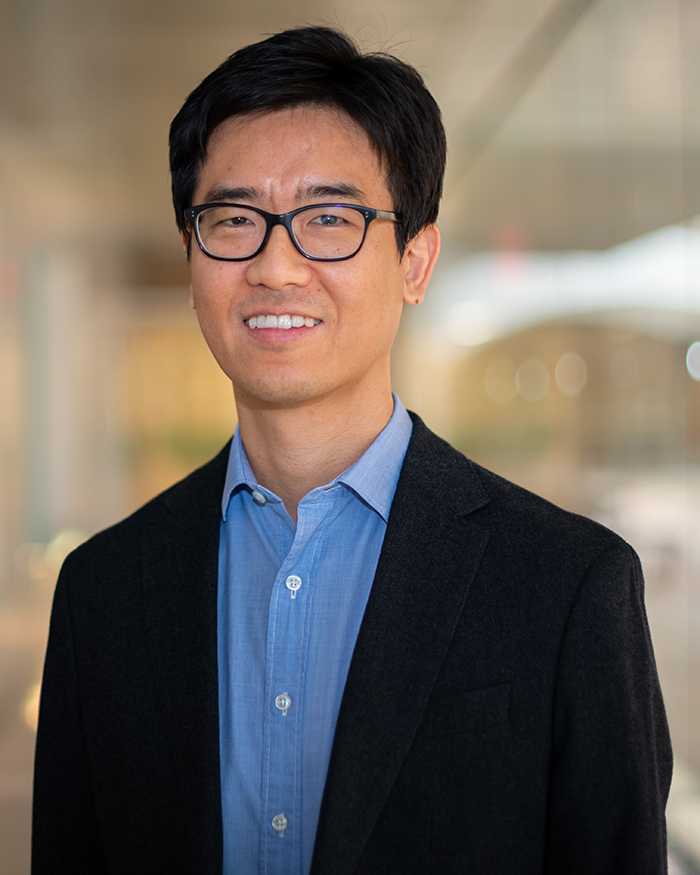Hun-Seok Kim appointed as inaugural Samuel H. Fuller Early Career Professor of Electrical and Computer Engineering

Hun-Seok Kim has been named the first Samuel H. Fuller Early Career Professor of Electrical and Computer Engineering (ECE), honoring his exceptional contributions to research and education as an early career professor in the division. His appointment is effective September 1, 2024.
Alum Samuel H. Fuller (BSEE ’68) established the professorship to recruit and retain rising stars in the ECE faculty, especially computing researchers who contribute to interconnecting the physical and digital worlds. Since joining Michigan ECE in 2014, Kim has spearheaded several projects to bring the physical and digital worlds together.
“Hun-Seok is one of our most accomplished associate professors in ECE,” said former Interim Chair Dennis Sylvester. “His research record is truly outstanding.”
Kim’s work has consistently improved the efficiency, size, and communication functions of sensing devices. One of his early contributions was an efficient and flexible system-on-chip called DASH-SoC, designed to improve intelligent wireless communications for a myriad of applications, including next generation (xG) cellular networks and inter-satellite space links . His research group also developed an ultra-energy-efficient processor, integrated into a camera to allow a small autonomous drone to continuously compute its location and orientation while mapping its surroundings.
Kim is currently using the Michigan Micro Mote (M3) developed by an interdisciplinary research team involving multiple faculty members to track the migration path of monarch butterflies. Tiny sensors mounted to the bodies of monarchs collect light intensity and temperature data as they migrate, allowing Kim to design and train deep learning algorithms that reconstruct their 3,000-mile flight paths between Mexico and Canada. This knowledge helps conservation biologists know where to focus their efforts for maximum benefit to the butterflies.

Another notable project of Kim’s is the development of iGYM, an augmented reality platform that allows disabled children to play a physical sport equitably with non-disabled children. He designed an algorithm that detects and follows the players on the virtual game field as they “kick” a ball of light projected onto the floor. Kim’s algorithm allows disabled players to extend their personal space and kick the ball by pressing a button, to mirror a non-disabled player’s ability to outstretch their limbs. The interactive details of the game such as the speed, simulated friction, bounciness, and size of the ball may also be adjusted to suit the players.

Kim has received a DARPA Young Faculty Award, an NSF Career award, and five best paper awards for his research. He holds 22 U.S. patents.
Kim also has an impressive teaching record, which includes the creation of the graduate level special topics course, VLSI for Machine Learning and Wireless communication. This highly-relevant course has tripled in enrollment since it was first introduced in 2017.
“This prestigious honor is both humbling and exhilarating,” said Kim. “I am truly grateful for the support and incredible recognition of this appointment.”
Kim will offer a lecture to the public at a reception on November 15, 2024, at 3:30pm in the Johnson Rooms (3rd floor of the Lurie Engineering Center).
 MENU
MENU 
